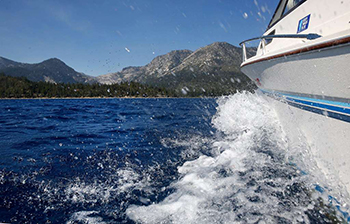Lake Tahoe and the community around it are increasingly battered by climate change and drought, with the lake’s temperature climbing 10 times faster than the historic average in the past four years and algae threatening the Sierra Nevada gem’s famous emerald and blue clarity.
Intense seasonal changes in 2016 — hallmarks of climate change — killed huge swaths of forest around the lake and nourished invasive species, according to the annual Tahoe State of the Lake Report released Thursday by the UC Davis Tahoe Environmental Research Center.
The beloved vacation spot, researchers said, now sees summer conditions for 26 more days than it did in 1968, boosting the danger of devastating wildfires, while the spring snowmelt has moved up 19 days since 1961. The report was based on conditions measured throughout last year.


